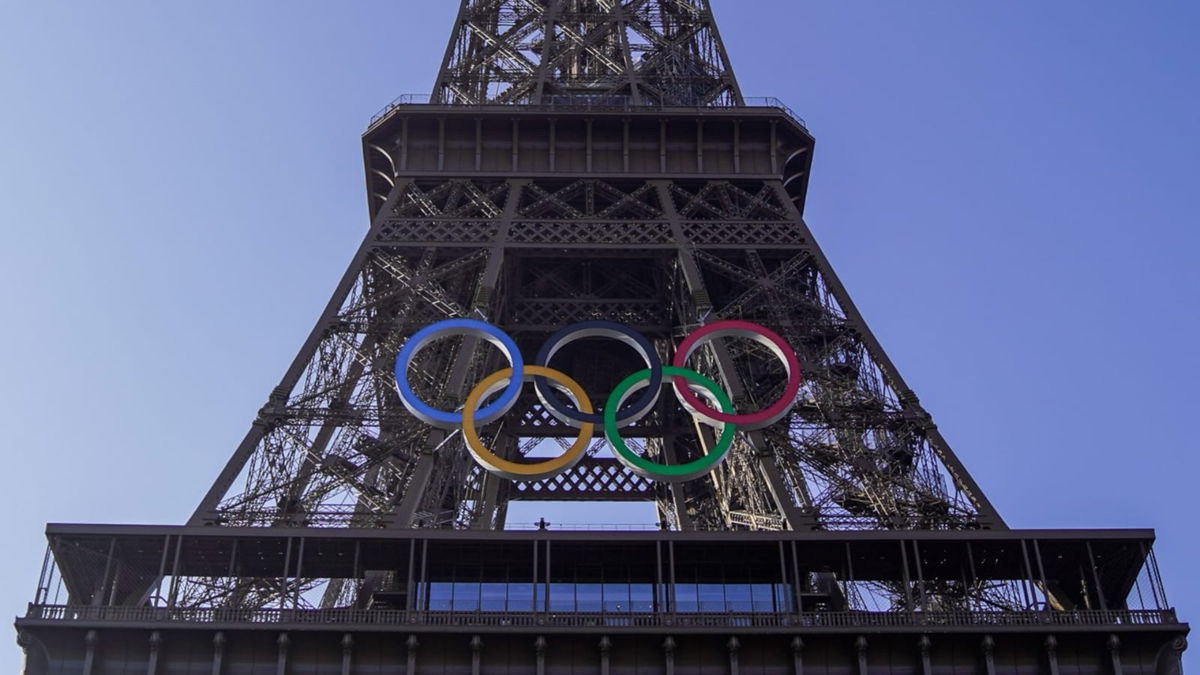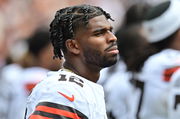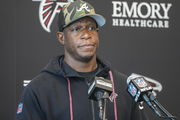

The elite Olympic stage holds utmost reverence and act as hallowed halls of camaraderie and a rich history of interwoven culture to it as well. “For athletes, the Olympics are the ultimate test of their worth.” And this statement rings true to the kind of talent we witness every four years. The games are estimated to draw in 16 million viewers from around the world to witness more than 10,500 athletes from 200 countries competing in 329 events across 32 different sports. In a bold display of Olympics spirit, London’s Tower Bridge and Sydney’s Harbour Bridge have long been adorned with the iconic five rings, symbolizing unity and competition. These landmarks, as Olympic backdrops, highlight their cities’ proud roles and lasting contributions to global sports.
Watch What’s Trending Now!
In contrast, the Eiffel Tower, an equally renowned global landmark, has only recently joined this tradition as Paris gears up to host the upcoming Olympic Games. The Eiffel Tower is already bearing the mark of anticipation as the Olympic rings are added to enhance its beauty. As Paris prepares, it follows in the footsteps of London and Sydney, integrating its architectural marvels with the Olympic legacy. How did the firebrand Sydney and London shine a light on Paris?
ADVERTISEMENT
Iconic bridges: Pioneers of Olympic rings display
Recently. AP News reported that it’s a mere 50 days for the countdown until the start of the Summer Olympics. The organizers unveiled the iconic five Olympics rings mounted on the Eiffel Tower, as an epitome of commemoration of grandeur and sporting legacy. Each ring is reportedly 30 feet in diameter, which gives us a good measure of just how magnificent the sculpture is, backed by cerebral advent of technology, ingenuity and know-how. The rings are made of recycled steel and are visible on the south side of the Eiffel Tower, overlooking the breathtaking Seine. It can be viewed from the spot where thousands of athletes will soon join in solidarity for the opening ceremony along the banks of the river. They will also parade on boats over a stretch of 6 km along the Seine. This design brings to mind London and Sydney and we’d be remiss if we didn’t point them out.

ADVERTISEMENT
During the Olympic held in Sydney in 2000, the rings adorned the Sydney Harbour Bridge. The rings were even bigger at that time, measuring 70 by 40 feet. Though they were sold in 2015 for nearly $17,000 to a businessman named Bernard Maas, the rings remain iconic. Similarly, during the London Games of 2012, they were installed in the British capital. These rings adorned the Tower Bridge overlooking the Thames. The installation of the rings which were 11.5 meters tall and 25 meters wide was presided upon by then Chairman Lord Coe and ex-PM Boris Johnson. Coe even said, “The Olympic rings are an iconic symbol, inspiring athletes and uniting people around the world. To athletes they represent the culmination of thousands of hours of training and reaching the highest level in sport.” Following this tradition, the Olympic rings being installed in Paris are harbingers of a successful summer games and a way to keep the flame of tradition burning as brightly as ever. This year the ante is upped though as Paris is defiant in upping the ante, thanks to its successful stakeholders.
ADVERTISEMENT
French government are the real lynchpins of this year’s Olympics season
France is properly gearing up to host the Olympics over the 26th of July to 11th August. Before the Olympics rings, the purple athletics track being set in the Stade de France already made headlines. This vivid color of the track is being debuted in the Paris Olympics and experts are still debating whether or not the color is simply being used for visual appeal or whether it marks some improvements being made. The city is also focusing on green initiatives by improving their cycling infrastructure and renovating existing venues. This is being done to decrease the carbon footprint during the games. Additionally, the Whole RER project is undertaking significant changes in the transportation infrastructure in Paris, in a bid to improve access to different event venues.
Top Stories
Travis Kelce Confirms Retirement Stance as Chris Jones Makes Bold Claim on Chiefs TE’s Future

Ex-Wife Elin Nordegren’s Reaction to Tiger Woods Dating Vanessa Trump Speaks Volumes

NFL Makes Final Punishment Decision on Shedeur Sanders Incident in Week 17

Furious Lamar Jackson Confirms Stance on Ravens Future as John Harbaugh Blames Tyler Loop for Playoff Exit

Falcons Owner Arthur Blank Makes Double Firing Decision as Locker Room Stands Against Raheem Morris’ Exit

Brooks Koepka’s LIV Golf Exit Explained as Ex-Pro Reveals Brutal Reality

A new 51-hectare Olympic Village is being constructed to house the 14,5000 athletes and officials. This is in addition to the 35,000 to 45,000 police officers who will be deployed to maintain a smooth and secure running of the Games. On the healthcare side, all event venues will be equipped with medical staff and volunteered physicians and nurses. The Olympic Village will have its own ‘Polyclinic’ to care for the athletes. Here’s to a cerebral 2024 and Paris Olympics ahead. Godspeed.
ADVERTISEMENT
ADVERTISEMENT
ADVERTISEMENT
ADVERTISEMENT

